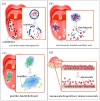Emerging Applications of Drug Delivery Systems in Oral Infectious Diseases Prevention and Treatment
- PMID: 31991678
- PMCID: PMC7038021
- DOI: 10.3390/molecules25030516
Emerging Applications of Drug Delivery Systems in Oral Infectious Diseases Prevention and Treatment
Abstract
The oral cavity is a unique complex ecosystem colonized with huge numbers of microorganism species. Oral cavities are closely associated with oral health and sequentially with systemic health. Many factors might cause the shift of composition of oral microbiota, thus leading to the dysbiosis of oral micro-environment and oral infectious diseases. Local therapies and dental hygiene procedures are the main kinds of treatment. Currently, oral drug delivery systems (DDS) have drawn great attention, and are considered as important adjuvant therapy for oral infectious diseases. DDS are devices that could transport and release the therapeutic drugs or bioactive agents to a certain site and a certain rate in vivo. They could significantly increase the therapeutic effect and reduce the side effect compared with traditional medicine. In the review, emerging recent applications of DDS in the treatment for oral infectious diseases have been summarized, including dental caries, periodontitis, peri-implantitis and oral candidiasis. Furthermore, oral stimuli-responsive DDS, also known as "smart" DDS, have been reported recently, which could react to oral environment and provide more accurate drug delivery or release. In this article, oral smart DDS have also been reviewed. The limits have been discussed, and the research potential demonstrates good prospects.
Keywords: drug delivery systems; oral infectious diseases; stimuli-responsive DDS.
Conflict of interest statement
The authors declare no conflict of interest.
Figures







References
-
- Scannapieco F.A. The oral microbiome: Its role in health and in oral and systemic infections. Clin. Microbiol. Newsl. 2013;35:163–169. doi: 10.1016/j.clinmicnews.2013.09.003. - DOI
Publication types
MeSH terms
Grants and funding
LinkOut - more resources
Full Text Sources
Medical

